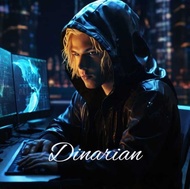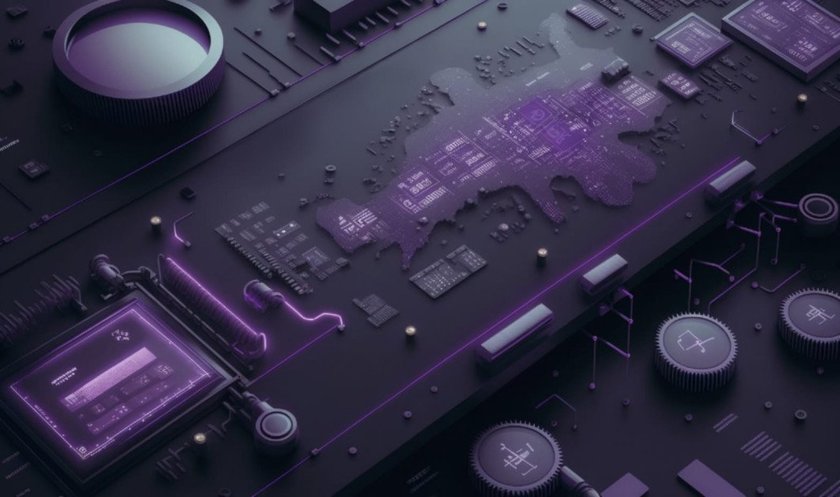This week, the publicly-traded cryptocurrency exchange Coinbase unveiled its own Ethereum layer-2 network called Base and advised the crypto community to stay tuned for the upcoming mainnet launch.
The Base chain will be home to Coinbase’s on-chain products as well as an open ecosystem for millions of new decentralized apps (dApps), said the leading cryptocurrency exchange.
“Base is an Ethereum L2 that offers a secure, low-cost, developer-friendly way for anyone, anywhere, to build decentralized apps. Our goal with Base is to make on-chain the next online and onboard 1B+ users into the crypto economy,” Coinbase said on Twitter.

Coinbase Senior Director of Engineering Jesse Pollak shared that while the platform was only announced on Thursday, a testnet for Base has actually been live since the start of the month.
“Our goal is to launch mainnet in the next few months,” he said. “This is a bet that we can help enable the next million dapps, which are going to bring in the next billion users. We think that will happen on a five- to 10-year horizon, and this is our contribution to making that happen sooner rather than later.”
The goal of Base is to bring about phase 4 of Coinbase’s ‘secret master plan,’ which is to create an open financial system and onboard the next wave of users to the crypto economy. With this move, Coinbase has become the first publicly traded company to launch an Ethereum Layer 2.
Layer 2 networks help make transactions faster and cheaper than the underlying blockchain, such as Ethereum, by processing batches of transactions on a separate chain and then sending receipts back to the mainnet.
Entering a Crowded Sector
Coinbase’s Base is just one of many Ethereum Layer 2s; others in the space include Polygon, Arbitrum, Optimism, Loopring, and Starknet, to name a few.
According to L2Beat, there is currently more than $6 billion worth of ETH on these layer 2s, which is a 17% growth from a month ago. This website tracks 26 different Ethereum scaling networks and notes that Arbitrum One accounts for the majority (53%) of the L2 market share, while Optimism has captured 31% of this segment.
However, unlike these L2s, Base will not be launching a network token, which is used on other networks to pay gas fees and incentivize development.
According to Coinbase, “tokens are not the only way to drive activity,” instead, it believes “building great products is a great way of driving activity by making things actually useful.”

It’s interesting to note that both Arbitrum and Optimism launched their networks without tokens initially. However, Optimism has since airdropped its governance token to early adopters of its network. This was done in order to distribute governance power to the community and fund development proposals through its DAO. There have been rumors that Arbitrum has been planning something similar for a long time, but no token has yet been released.
However, Base’s entry into the market may not be as competitive for Optimism. According to Coinbase’s announcement, Base will be “a rollup agnostic superchain powered by Optimism.”
The base will also return a portion of its transaction fee revenue to the Optimism Collective. “This move furthers the Collective’s vision for a sustainable future where Impact = Profit,” tweeted Optimism on Thursday.
Following the Coinbase announcement, Optimism’s native token, OP, recorded a jump in price. The $668 million market cap coin is up 11% in the past 24 hours and nearly 240% YTD, as per CoinGecko. Launched in May 2022, just earlier this month, OP hit an ATH of $3.19.
Earlier this month, Optimism revealed its plans to upgrade its network next month, which is a “step towards a multi-chain future.” Dubbed “Bedrock,” the upgrade aims to lower fees, increase transfer speed, and enhance compatibility with the Ethereum Virtual Machine (EVM).
To address the issues of speed and cost associated with layer-1 blockchains, Optimism uses “rollups,” which involve processing transactions on a separate chain and then settling them on the mainnet in batches.
Decentralized Over Time
The Base chain is launched with dozens of partners who have committed to building in and supporting the ecosystem. Some of these include Ethereum block explorer Etherscan, oracle network Chainlink, DeFi protocol Aave, Animoca Bands, and SushiSwap.
Coinbase said it intends for Base governance to be fully decentralized, but it won’t be that way initially. Instead, it would happen rather progressively in the years ahead.
“Coinbase is going to gradually transition into a role where we’re a contributor to Base, we provide services and products that are built on top of Base, and we are not the decision maker for everything in the Base network — that’s being done through more decentralized governance,” Pollak said.
And to best achieve its goals, Coinbase has decided to join Optimism as a core developer on the open-source OP Stack. They have also decided to keep the core team really lean so that “we can have an outsized impact if we’re building on-chain,” said Pollak.
The exchange explained in the official blog post that by leveraging Optimism’s OP Stack and collaborating with Optimism, Base will act as “an open platform that anyone can contribute to, fork, and extend to help the crypto economy scale.”

So, Coinbase will have more control over Base at first with the vision to make Base fully permissionless eventually. And according to the announcement, Base will progress from its current Stage 0 to the next stage rollup this year alone, with the Stage 2 rollup to be achieved in 2024.
While Base will be a separate network, it will still be powered by the underlying blockchain, that is, Ethereum. It will use Ethereum’s security infrastructure, but it won’t be limited to Ethereum; rather will also provide easy and secure access to other layer 2 networks, such as Optimism, as well as other blockchains ecosystems, such as Solana, Avalanche, and Polygon.
“Base offers full EVM equivalence at a fraction of the cost and is committed to pushing forward the developer platform,” explains Coinbase’s blog post on the L2 Base.
Coinbase further plans to integrate the Base chain across its exchange, wallet, NFT marketplace, and developer products.
Along with the new chain, Coinbase also announced the launch of a Base Ecosystem Fund to support early-stage projects working with Base as long as they meet the company’s investment criteria.
COIN Gaining Strength
While in its announcement, Coinbase made it clear that it has “no plans to issue a new network token,” degen traders were quick to find an alternative.
Some degen crypto traders piled into an unrelated token called BASE following Coinbase’s layer-2 announcement. The native token of Base Protocol, BASE saw its price soar about 350% in a few hours to almost its ATH before falling down hard to its previous levels.
Some have suggested that insider trading may have occurred, as the BASE token began to move long before the Coinbase announcement.
Meanwhile, Coinbase (COIN) prices are up 16% since early last week but down 29% since early February highs. COIN is a $14.43 billion market cap stock trading at $62.36 at the time of writing.

In 2023, along with the broad crypto market green, COIN prices also recovered, having started the year under $32. Still, the stock is nowhere near its all-time high (ATH) of $430 hit when it first started trading on Nasdaq under the COIN ticker in April 2021. The COIN stock prices have only been down since currently 85.5% off their peak.
Amidst the positive price movement, Cathie Wood’s investment management firm ARK added around $13.2 million worth of Coinbase (COIN) shares, per an investor email on Thursday.
ARK Innovation ETF (ARKK) added 181,972 shares ($11.4 million) of Coinbase. This was the fund’s biggest COIN order of the year, surpassing the $9.2 million order earlier this month. Meanwhile, 31,547 COIN shares ($1.93 million) were added to Ark’s Next Generation Internet ETF (ARKW).
These purchases came after Coinbase reported its Q4 2022 earnings this Tuesday, which beat analyst expectations.
The San Francisco-based company reported fourth-quarter net revenue of $605 million, up 5% from $590 million in the third quarter. Subscription and service revenues grew 34% to $283 million in Q4, accounting for almost 50% of Coinbase’s overall revenue in the quarter, which was primarily due to interest income that came in at $162.2 million. Transaction volume, however, fell 12% quarter over quarter to $322 million on lower overall trading volume.
In its shareholder letter, Coinbase said crypto markets have improved in Q1 2023 compared to Q4 2022, helping it generate $120 million in transaction revenue in January 2023.
However, during the company’s earnings call, CEO Brian Armstrong cautioned retail investors “not to extrapolate those results forward,” pointing out that last year revealed just how volatile the crypto market can be.
Coinbase expects increased crypto regulation globally in the coming years and anticipates benefiting from it. The company also criticized the fragmented approach of the United States to regulating crypto but continues to work towards more consistent policies.
“Policy is my top priority this year,” said Armstrong, adding that he’s been spending a lot of time in Washington, D.C. “There is a lot of excitement about the potential of this technology, and there is a lot of desire for people to have this built here in America.”




























